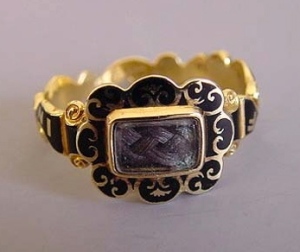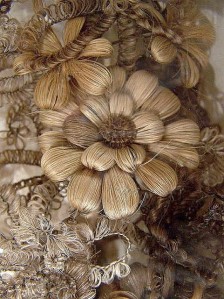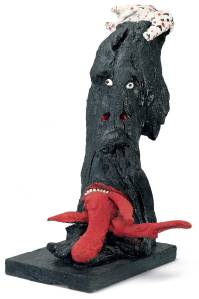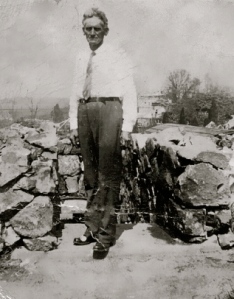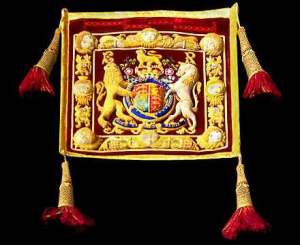Although her name is not widely known, Mary Vaux Walcott (1860—1940) was a true trailblazer during the Victorian era, and left a remarkable legacy encompassing the diverse fields of art, photography, glaciology, botany, and mountaineering.
Mary Morris Vaux was born July 31, 1860, into an old and prominent Philadelphia Quaker family. She received a “guarded” education at the Friends Select School in Philadelphia, where the curriculum included Catechism, daily Scripture readings, and weekly Meetings for Divine Worship, in addition to academic subjects. Following the death of her mother soon after graduating, Mary assumed the family’s domestic responsibilities, caring for her father and two younger brothers and managing the family homes in Philadelphia and nearby Bryn Mawr, where she also oversaw the family dairy farm.
Mary first visited western Canada at age 27 with her father and her brothers. The year was 1887, the second summer the Canadian Pacific Railway (CPR) offered transcontinental railway service, and the first year it offered lodging at Glacier House near Rogers Pass, British Columbia. The completion of the CPR had opened the alpine region of western Canada, and ushered in the development of tourism and the sport of mountaineering. Captivated by the breathtaking majesty and unspoiled grandeur of the region, Mary returned with various family members nearly every summer for four decades beginning in 1895.
Mary and her brothers undertook the study of glaciers in Alberta and British Columbia, surveying, mapping, photographing, and measuring glacial movement. These studies remain vital to scientists today in understanding climate changes and land-shaping processes. Mary’s contributions were rewarded with election to the Academy of Natural Sciences of Philadelphia in 1892; she was among the first women to receive this recognition.
Mary had learned the platinum photo printing process from the noted Philadelphia photographer, William H. Rau. She handled the technical aspects of the glacier photography, printed the photographs, and took many landscape photographs used by the CPR for promoting rail travel. Mary was a member of the Photographic Society of Philadelphia, and an associate member of the Photo-Secession, founded by Alfred Stieglitz in 1902. She showed her photographs in exhibitions sponsored by both groups, published them in numerous publications including National Geographic Magazine, and gave frequent magic lantern lectures with her own hand colored slides about her travels and research. More than 2,500 of the Vaux family’s original glass and film negatives and lantern slides are now in the collection of the Peter and Catharine Whyte Museum in Banff, Alberta.
Mary became an avid outdoorswoman, hiking, camping, and exploring the Canadian wilderness on horseback. On July 21, 1900, ten days before her 40th birthday, she became the first woman to climb Mount Stephen—and the first woman to ascend a peak over 10,000 feet in Canada. In 1908 a peak was named for her: Mount Mary Vaux rises prominently to 10,881 feet over the Maligne Lake valley in Alberta’s Jasper National Park. She was a charter member of both the Alpine Club of Canada and the Trail Riders of the Canadian Rockies. Mary estimated that she had ridden some 5,000 miles on horseback through the Canadian wilds in her lifetime, and she celebrated her 77th birthday with a 20-mile ride in the mountains.
In 1907, Mary Vaux met Charles Doolittle Walcott (1850 —1927), noted paleontologist and Secretary of the Smithsonian, during his first visit to Canada. The two were married in June 1914, and Mary became a first-time bride the month before her 54th birthday. Mary and Charles lived in Washington, and spent three to four months each year in Canada for the next 12 years. It’s important to recognize the hazards and harsh conditions during these months-long excursions in the rugged Canadian mountains: it was a true wilderness where sudden snowstorms, cold, drenching rains, grizzly bear encounters, and pack horses carrying supplies and specimens falling to their deaths were not uncommon.
Mary had taken watercolor lessons in her youth and was an accomplished watercolorist. She later recalled, “Wildflowers were a joy and inspiration in the happy days of my childhood when I was taught to observe and sketch them under the direction of a skilled artist.” Years later in Canada, a “botanical friend” asked her “to portray a rare and perishable alpine flower so as to preserve its beauty, color, and graceful outline as a living thing.” She began to focus her attention on wildflowers. Her goal was to “collect and paint the finest specimens obtainable, and to depict the natural grace and beauty of the plant without conventional design.”
Mary carried her paint box and pads on the back of her saddle, and painted wherever specimens were encountered. Often, that meant warming her stiff hands by a fire in high passes and on mountainsides, or painting in the “diffused light of the white tent,” which she found “a great handicap.” The unpredictable weather conditions created challenges, as did the short lives of alpine blooming plants, which limited the number of sketches that could be completed each season. Not only did she find that wild flowers wither quickly, but sudden frosts killed them, and unusually warm, dry weather or cold, wet weather prevented their blooming at all. “For these reasons,” she explained, “desirable specimens of many of the fragile alpine flowers are difficult to secure, and in some instances were seen in perfection but two or three times during the many seasons on the trail. The limited habitat of others made it necessary to take long rides and climb high above the timberline to procure them, and frequently no trails were available. Our sure-footed mountain ponies were a large factor in our success.”
Over the years, her botanical watercolors grew in number, and in 1925 the Smithsonian published North American Wild Flowers, a five-volume set of 400 color lithographs of her watercolors accompanied by her written descriptions of each plant. This seminal work led to her designation as the “Audubon of botany.” The original 809 watercolors are now housed in the collection of the Smithsonian American Art Museum.
In 1927, both Mary’s husband Charles and her brother, George Jr. died. George had served on the United States Board of Indian Commissioners, a watchdog group charged with investigating and overseeing the Bureau of Indian Affairs. Mary was appointed by President Calvin Coolidge to fill his vacancy on the Board. She was reappointed by President Herbert Hoover and served until 1933, when the Board was disbanded. During her tenure with the Board of Indian Commissioners she traveled across the country nine times by car, made some 100 visits to Indian reservations, and presented her findings in written reports to the Board. She took the opportunity to collect Indian artifacts on these trips, and donated a number of the pieces to the Smithsonian.
Mary Vaux Walcott made her final visit to western Canada in 1939. She died of a heart attack August 22, 1940, just after her 80th birthday, while visiting friends in St. Andrews, New Brunswick. She is buried in Rock Creek Cemetery in Washington, next to Charles Walcott.
—Lynne Adele








